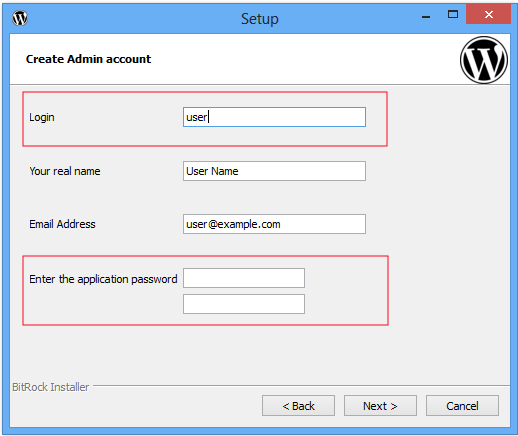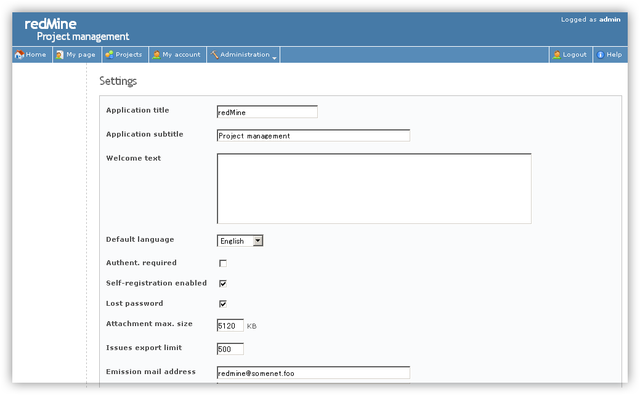
- BITNAMI REDMINE DEFAULT APPLICATION DIRECTORY HOW TO
- BITNAMI REDMINE DEFAULT APPLICATION DIRECTORY INSTALL
- BITNAMI REDMINE DEFAULT APPLICATION DIRECTORY UPGRADE
- BITNAMI REDMINE DEFAULT APPLICATION DIRECTORY VERIFICATION
- BITNAMI REDMINE DEFAULT APPLICATION DIRECTORY SOFTWARE
Restart Apache to make the changes take effect: $ sudo /opt/bitnami/ctlscript. NOTE: CONTENT is a placeholder, replace it with the content of the /opt/bitnami/APPNAME/.htaccess file created by the plugin. Follow these steps:Īdd a new entry in the /opt/bitnami/apache/conf/vhosts/htaccess/nf file specifying the path where the htaccess file is ( /opt/bitnami/APPNAME/ or /opt/bitnami/htdocs//plugins/) and pasting below the content of that file. For that reason, we recommend moving the content of that file to the /opt/bitnami/apache/conf/vhosts/htaccess/nf file. htaccess file in either the /opt/bitnami/APPNAME/ or in the /opt/bitnami/apps/APPNAME/plugins/ directory that cannot be read by Apache. Some plugins, during their installation, create a. For these cases, the file must be created manually.Īdd a new section in the. Some applications do not have the /opt/bitnami/apache/conf/vhosts/htaccess/nf file. htaccess file can be found at /opt/bitnami/APPNAME/.htaccess. htaccess files required by the application. The /opt/bitnami/apache/conf/vhosts/htaccess/nf file ships the content of all. Include "/opt/bitnami/apache/conf/vhosts/htaccess/nf" Options -Indexes +FollowSymLinks -MultiViews The /opt/bitnami/apache/conf/vhosts/nf file is the main application configuration file. htaccess files from custom locations, the contents of this file can be found in the /opt/bitnami/apache/conf/vhosts/htaccess/nf file. Instead, find (or create) the block that refers to the directory where you’re actually planning to place a. Launch a new Redmine packaged by Bitnami instance You've several options to launch a new Redmine packaged by Bitnami instance in Microsoft Azure: Launch in Microsoft Azure Get Started With Bitnami Applications In The Microsoft Azure Marketplace 2. To quote: “For security and performance reasons, do not set AllowOverride to anything other than None in your block.
BITNAMI REDMINE DEFAULT APPLICATION DIRECTORY SOFTWARE
NOTE: The Apache Software Foundation also recommends this configuration. htaccess files has been moved to the main application configuration files and set the AllowOverride option to None by default, if supported by the application. For this reason, the configuration in the. One of our main goals is to configure Bitnami applications in the most secure way. See the License for the specific language governing permissions and limitations under the License.Understand default. Unless required by applicable law or agreed to in writing, software distributed under the License is distributed on an "AS IS" BASIS, WITHOUT WARRANTIES OR CONDITIONS OF ANY KIND, either express or implied. Licensed under the Apache License, Version 2.0 (the "License") you may not use this file except in compliance with the License.

BITNAMI REDMINE DEFAULT APPLICATION DIRECTORY UPGRADE
BITNAMI REDMINE DEFAULT APPLICATION DIRECTORY INSTALL
Install a chart: helm install my-release oci:///bitnamicharts/.
BITNAMI REDMINE DEFAULT APPLICATION DIRECTORY HOW TO
Please refer to the Quick Start guide if you wish to get running in just a few commands, otherwise the Using Helm Guide provides detailed instructions on how to use the Helm client to manage packages on your Kubernetes cluster. Once you have installed the Helm client, you can deploy a Bitnami Helm Chart into a Kubernetes cluster. To install Helm, refer to the Helm install guide and ensure that the helm binary is in the PATH of your shell. Charts are packages of pre-configured Kubernetes resources. Helm is a tool for managing Kubernetes charts.

The quickest way to setup a Kubernetes cluster to install Bitnami Charts is following the "Bitnami Get Started" guides for the different services:
BITNAMI REDMINE DEFAULT APPLICATION DIRECTORY VERIFICATION
Since the container image is an immutable artifact that is already analyzed, as part of the Helm chart release process we are not looking for vulnerabilities in the containers but running different verification to ensure the Helm charts work as expected, see the testing strategy defined at TESTING.md. Those containers use images provided by Bitnami through its test & release pipeline and whose source code can be found at bitnami/containers.Īs part of the container releases, the images are scanned for vulnerabilities, here you can find more info about this topic.

Helm install my-release oci:///bitnamicharts/ Vulnerabilities scannerĮach Helm chart contains one or more containers.


 0 kommentar(er)
0 kommentar(er)
